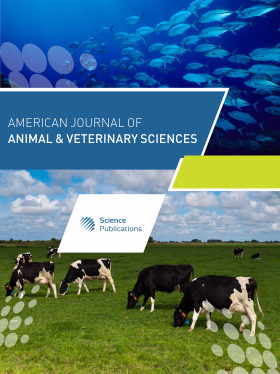Intensification of Mare's Milk Production at Designed Kumiss Farms
- 1 Zhangir Khan West Kazakhstan Agrarian and Technical University, Uralsk, Kazakhstan
- 2 Zhambyl Branch, Kazakh Scientific Research Veterinary Institute, Taraz, Kazakhstan
- 3 Laboratory of Breeding and Biotechnology, Institute of Biology and Biotechnology of the Science Committee of the Ministry of Science and Higher Education of the Republic of Kazakhstan, Almaty, Kazakhstan
- 4 Department of Animal Husbandry, Veterinary Medicine and Assessment of Feed and Milk Quality, Research and Production Center for Animal Husbandry and Veterinary Medicine, Astana, Kazakhstan
- 5 Laboratory of Breeding and Biotechnology, Institute of Biology and Biotechnology of the Science Committee of the Ministry of Science and Higher Education of the Republic of Kazakhstan, Almaty, Kazakhstan
Abstract
The aim of this research was to study the global experience in designing kumiss farms and to evaluate the influence of machine and manual milking on the quantitative and qualitative composition of mare's milk in kumiss farms of the Zhambyl region. The object of the study was the Kazakh horse breed from two farms in the Zhambyl region: Ertai farm of Zhualyn district and Shaushen farm of Turar Ryskulov district. Experimental groups were formed using the method of pair analogues. Manual and machine milking procedures were carried out after manual stimulation of the udder to activate the milk let-down reflex, in the presence of foals that had not been allowed to suckle for three hours prior. International experience shows that optimal feeding and housing conditions significantly affect mare milk yield, while origin and breed influence udder morphology and suitability for machine milking. Most mares adapt to milking without suckling, although 10-15% without foals still yield poorly. In herd horse breeding in Kazakhstan, the suckling method remains economically justified, as the main objective is offspring rearing, with only part of the milk used for kumiss. In specialized dairy farms, however, the priority is maximizing milk production. The study found that with manual milking, udder filling was 5.2% lower compared to machine milking. Machine milking increased average udder capacity by 0.52 kg (23.5%) and average milk yield per session by 0.47 kg (58.8%) compared to manual milking. In Kazakh mares, the cisternal fraction of milk accounted for 18.1% and the alveolar fraction for 81.9% of total yield per milking.
DOI: https://doi.org/10.3844/ajavsp.2025.216.221

- 185 Views
- 34 Downloads
- 0 Citations
Download
Keywords
- Horse Breeding
- Mares
- Kumys Farm
- Milking Technology
- Udder
- Milk Yield
